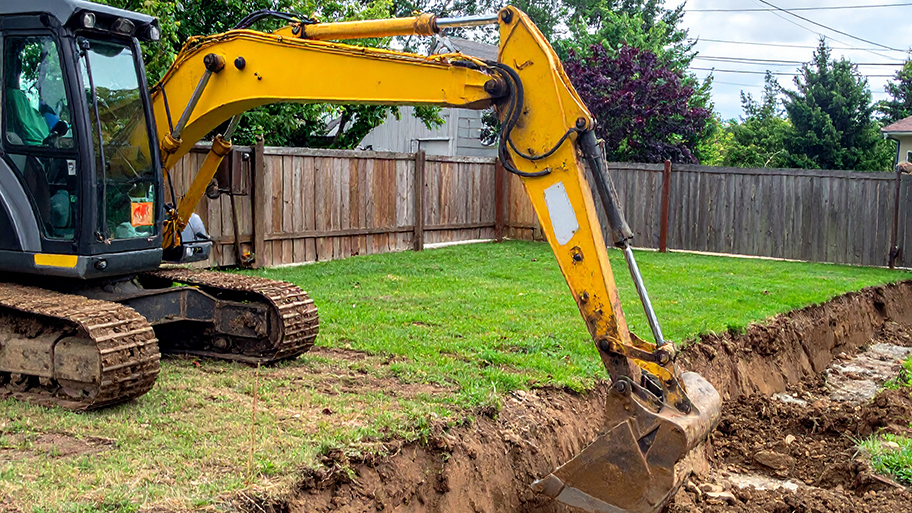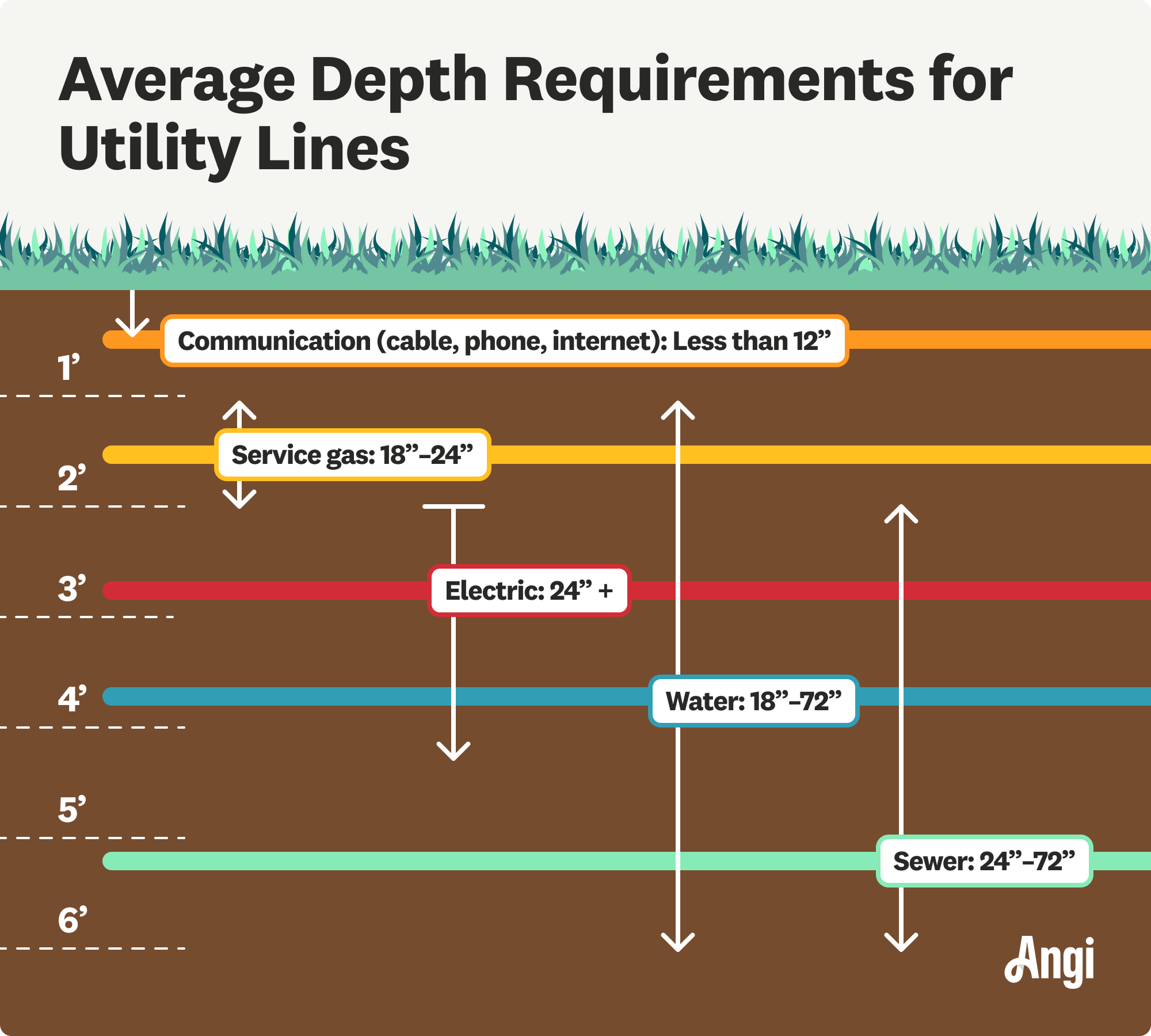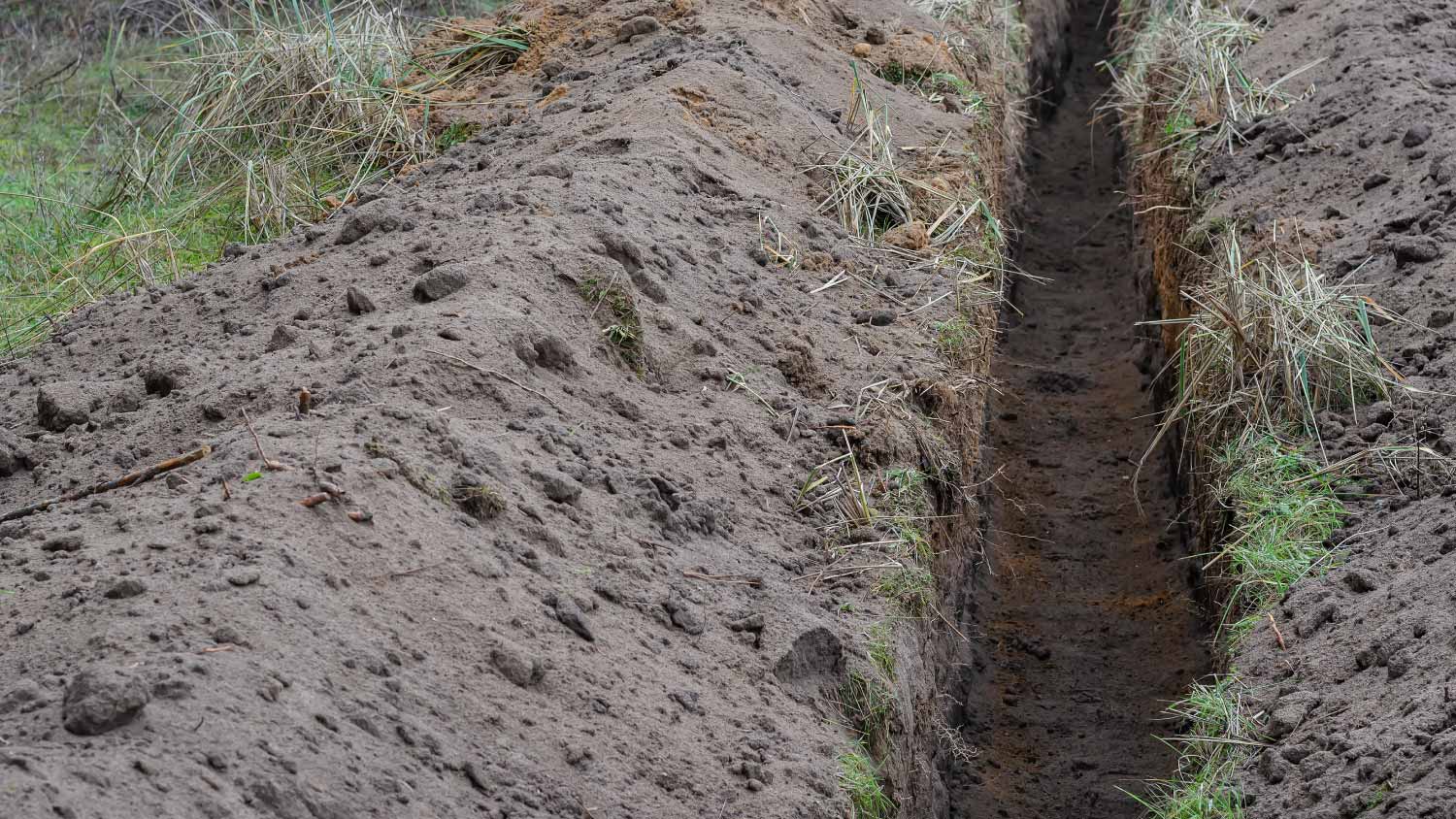
Digging a trench is usually the first step in a larger home project. Our trenching cost calculator breaks down the factors that affect the price tag of this job.
Don’t find yourself in the trenches—study up on joint trench codes before you dig


Local building code requirements dictate whether or not you can dig joint trenches, and these codes vary from city to city.
Joint trenches for electric and gas often require at least 12 inches between the lines.
Service gas lines must be at least 18–24 inches deep, and electric must be 24 inches deep or more.
Trenching costs $400 to $1,200 per 100 linear feet.
Installing new utilities on land can cost $6,500–$30,000.
You’re finally building the home addition you’ve been dreaming of, but you need to consider how to extend your gas and utility lines to this new part of the house. But as you’re browsing excavator rentals and considering your options, you may wonder if you could save money by combining the work. Can gas and electric be in the same trench? Here’s what you need to know about a process known as joint trenching.
Gas and electric can often be buried in the same trench (with some stipulations), and this setup is known as a joint trench. A joint trench isn’t always allowed for these or other utilities. Whether or not gas and electric can be in the same trench will vary by city and state building codes. Some places allow joint trenching but require the two lines to be a certain distance apart vertically or horizontally, often 12 to 24 inches.

Trenching, or digging, for utility lines can come with many requirements, all of which are designed to keep your household safe, your utilities stable, and the surrounding environment protected from any leaks or sparks.
While the exact utility trench requirements depend on your local building codes, here are some common joint trenching requirements when laying utilities:
Trench width: Most codes require 24 inches between the gas and electric lines, so consider this when deciding how wide and long to dig your trench.
Trench depth: When choosing how deep to dig the trench, keep in mind that electric lines need to be 24 inches deep, and service gas lines (not the main gas line) should be 18 to 24 inches deep. Main gas lines are buried deeper.
Conduits: Some soil, climate, and utility spacing conditions require conduits for more protection. For instance, installing electric in rocky soil requires 4 inches of sand bedding as a conduit.
Separate trenches: For building codes that require separate trenches for gas and electric, there may also be a requirement for spacing between trenches. The average space requirement is at least 3 feet between gas and electric trenches.
Notifying officials: No matter your location, you must call 811, the Call-Before-You-Dig hotline, at least 48 hours before starting a trenching project. Officials need to confirm that you won’t accidentally dig into any existing utility lines below ground.

Before you start digging a trench for utility lines, make sure to follow these tips to get the job done up to code.
It’s extremely important to check online or call your local zoning board or building department for the utility line requirements. There are rules on whether gas and electric can be in the same trench, but it can vary by city and state. You must comply with building codes to ensure the project is done safely and won’t harm your home or the surrounding environment.
The pros know the requirements like the backs of their hands, which is why it’s better to let an expert handle trenching and laying utility lines for you.
“Logistics and timing are two things that come with the price when you hire professionals to do this kind of work for you, and with that comes the security that if anything goes wrong, they will be on the line for it and not you.”
— Josh Rudin, Owner of ASAP Restoration LLC, Tempe, Arizona
If your local building codes do allow gas and electric to be in the same trench, keep them around the same height for easier servicing. For example, if the gas needs to be 18 to 24 inches below ground, but electric has to be 24 inches deep, lay them both at 24 inches deep (with 12 inches between each line). That way, if you need work done on the electric line, a pro doesn’t have to dig around past the gas line to reach the electric.
Trenching for utilities can get confusing when it comes to depth and separation requirements. Rather than trying to measure out a 24-inch depth with a 3-foot separation for the length of each utility line, let a local excavation pro dig your trenches to code, then turn to gas and electric pros to install the utilities for you. That way, you know the work meets code and will safely provide you with the power you need for years to come.

Digging a trench costs $400 to $1,200 for 100 linear feet, but the total will depend on the width and depth of the trench, the soil and site conditions, and whether you rent a trencher to DIY or hire a trenching pro. If you’re digging trenches for utility lines, you can also expect to pay between $6,500 and $30,000 for the cost to get utilities on your land. Installing electric costs $5 to $15 per linear foot, and gas installation costs $15 to $25 per linear foot.
From average costs to expert advice, get all the answers you need to get your job done.

Digging a trench is usually the first step in a larger home project. Our trenching cost calculator breaks down the factors that affect the price tag of this job.

Excavation costs $1,500 to $6,300 for most residential projects—but it depends on factors like the size of the area. This guide will help you plan a budget.

Time to get rid of that old chipped and crumbling walkway? Concrete removal costs can add up, but you have options to simplify the process. Learn more here.

Who can dig a trench for you? You can rent trenching equipment for a simple job, but a local excavation company can help with tough ones. Here's how.

Trenching is simpler and boring is best for complex properties. Learn all about boring versus trenching and when to use each.

Demolishing a house is a major project that’s best completed by professional demolition services. Read more about why and who to hire.